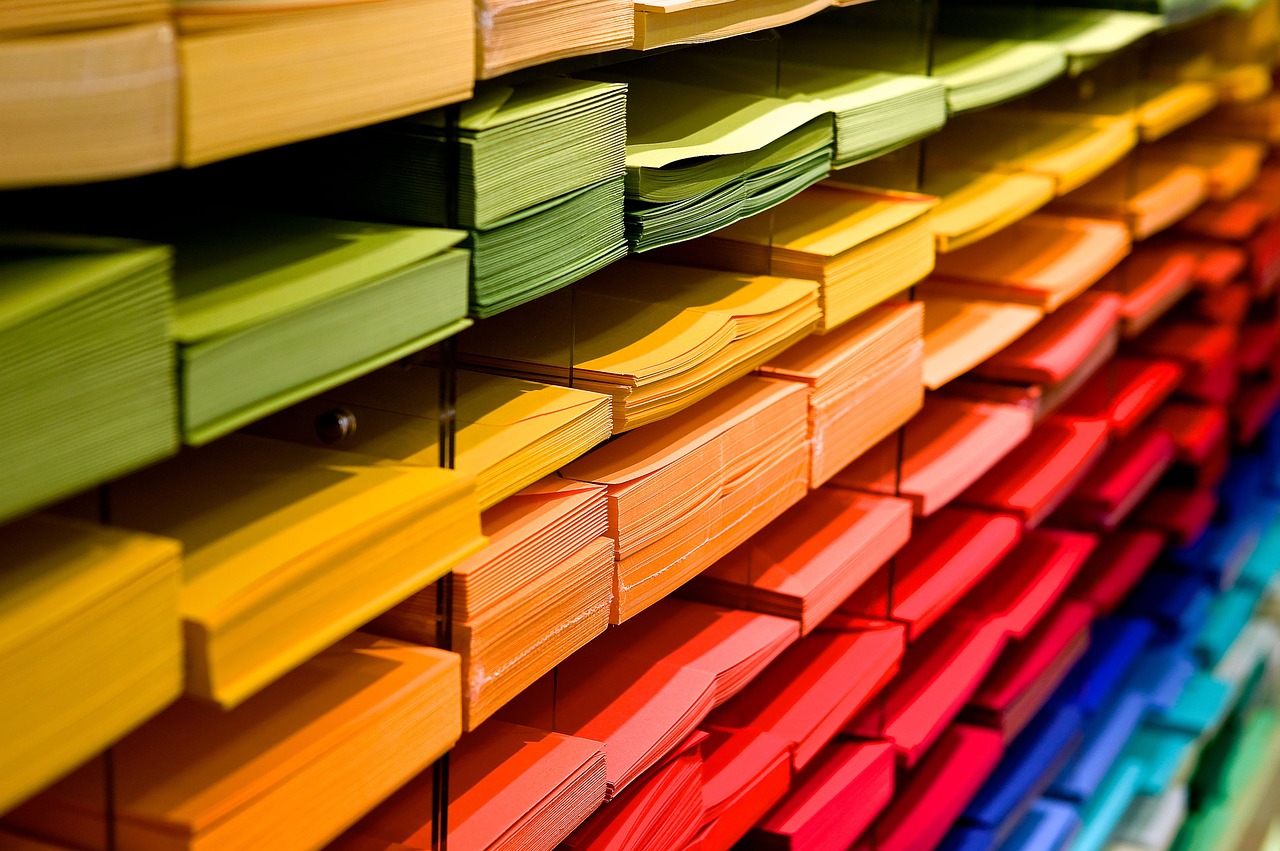Last Updated on: 22nd November 2023, 10:53 am
Psychology surrounding colour has long been used by businesses to target customers. Branding and retail interior aren’t assigned colour schemes off the cuff; there is much deliberation that goes into the decision.
The fact that red increases appetite is the reason why brands like McDonalds, KFC, Kellogg’s and Pizza Hut all use red in their branding. Blue features prominently in the logos of social networks Facebook, Twitter and LinkedIn because of its non-invasive and calming properties.
Choice of colour greatly influences human emotion and behaviour, but the psychology doesn’t have to stop with customers. Businesses are beginning to wake up to the fact that surroundings in the office have a significant impact on staff morale and productivity too.
As unlikely as it might seem, numerous studies show that choice of colour in the office affects focus, energy, and productivity. If you’re hoping to make workers more productive, understanding the basics of colour psychology helps in designing a space that maximises employees’ potential.
Sitting in a room surrounded by grey cubicles in a beige room day after day isn’t going to do much for productivity. Refreshing workspaces with more vibrant colours is an inexpensive way for employers to provide an energy boost.
Can colour really improve productivity?
Productivity is of course dependent on focusing the mind and having the facilities available to complete a task. But it is also made up of an accumulation of smaller things, including the choice of colour in an office.
Just by looking at a colour, a reaction is sparked in the brain which subsequently affects mood and emotion. Studies have found that colours impact many factors including productivity. To put it simply, entering a bright, colourful office space stimulates the brain and enthusiasm for the job at hand whilst a dull or dark office can cause workers to link their workplace with boredom and lifelessness.
Unfortunately, there isn’t one sole colour which is the best for improving productivity. It certainly doesn’t come down to a one-size-fits-all approach as different colours have different qualities that suit different areas of the office.
So, if you want to increase output, inspire creative thinking, and promote harmony at work, here’s a guide to choosing colours that will produce the effects you want.
Blue
Blue has a soothing effect upon humans and promotes trust and communication. Its ability to reduce stress and improve efficiency makes it most effective in busy office environments. Conversely, blue is also associated with sadness, meaning it should be used in moderation and alongside other colours to add warmth and vibrancy.
Red
Red has physical effects on the body, increasing the heart rate and blood pressure. Subsequently, the reaction to seeing red is to become faster and more forceful. As workers are unable to use excess energy at a desk, red colour schemes aren’t typically suited to the office space.
Small amounts of red for anything that you want to draw attention to is an ample amount of this colour. Any more is overwhelming and can generate feelings of anger and frustration.
Green
Humans closely associate green with the natural environment, meaning that feelings of growth, harmony and balance follow. Research has also linked this colour to creative performance.
Green is ideal for creating a calming atmosphere, so if you want to make employees and clients feel comfortable and relaxed, splashes of green around the office is a worthwhile addition. The best way to do this is to add some plants and indoor trees in open spaces and meeting rooms.
Yellow
An energising and welcoming colour, yellow can often act as a stimulus in creative spaces. The colour encourages focus, innovation and optimism, all necessary in a creative environment.
However, too much yellow can lead to anxiety, so keep it out of high-pressure situations. Yellow break-out spaces for brainstorming are ideal.
Ways of adding colour to the office
Adding colour to your office doesn’t have to come from painting all four walls of every room.
Accent furniture is an easy way of adding a selection of colours – there’s nothing drab about an office with blue sofas, green chairs and orange privacy pods. If you want furniture in neutral colours, how about making a colour statement on the floor or even with a feature wall?
Small additions can also be made by adding plants, colourful stationery and soft furnishings such as rugs, cabinets and bins.
About the author
Mark Brown is the owner of Lismark Office Products, a company specialising in designing and creating bespoke office layouts using high quality furniture. Mark is an expert in office furniture and design and has spent over a decade providing businesses with advice on setting up office spaces to enhance productivity and increase happiness.





